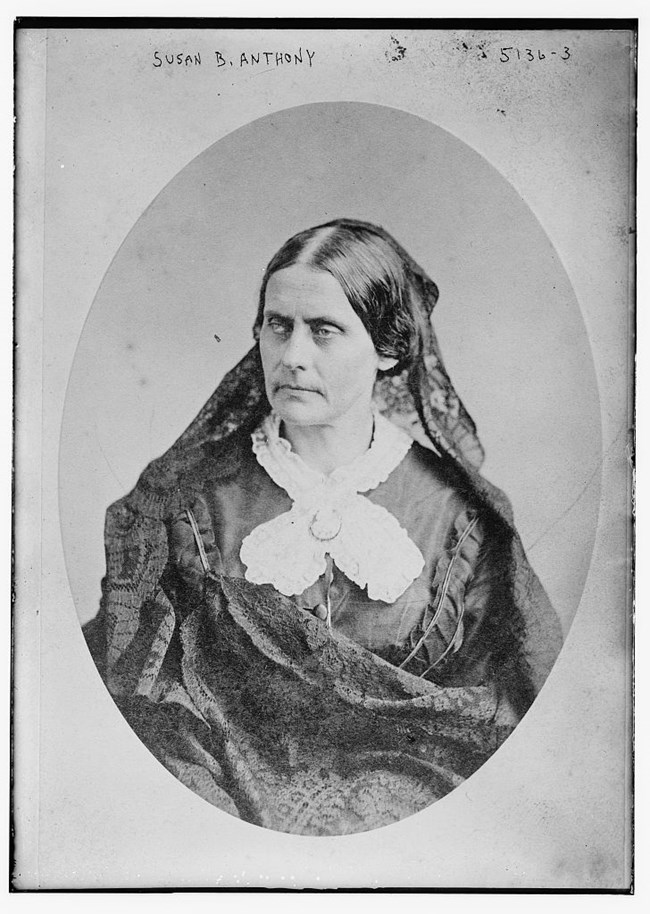
Library of Congress Susan B. Anthony(1820-1906) is perhaps the most widely known suffragist of her generation and has become an icon of the woman’s suffrage movement. Anthony traveled the country to give speeches, circulate petitions, and organize local women’s rights organizations. Anthony’s experience with the teacher’s union, temperance and antislavery reforms, and Quaker upbringing, laid fertile ground for a career in women’s rights reform to grow. The career would begin with an introduction to Elizabeth Cady Stanton. Meeting Elizabeth Cady Stanton was probably the beginning of her interest in women’s rights, but it is Lucy Stone’s speech at the 1852 Syracuse Convention that is credited for convincing Anthony to join the women’s rights movement. In 1853 Anthony campaigned for women's property rights in New York State, speaking at meetings, collecting signatures for petitions, and lobbying the state legislature. Anthony circulated petitions for married women's property rights and woman suffrage. She addressed the National Women’s Rights Convention in 1854 and urged more petition campaigns. In 1854 she wrote to Matilda Joslyn Gage that “I know slavery is the all-absorbing question of the day, still we must push forward this great central question, which underlies all others.” By 1856 Anthony became an agent for the American Anti-Slavery Society, arranging meetings, making speeches, putting up posters, and distributing leaflets. She encountered hostile mobs, armed threats, and things thrown at her. She was hung in effigy, and in Syracuse her image was dragged through the streets. At the 1856 National Women’s Rights Convention, Anthony served on the business committee and spoke on the necessity of the dissemination of printed matter on women’s rights. She named The Lily and The Woman’s Advocate, and said they had some documents for sale on the platform. Stanton and Anthony founded the American Equal Rights Association and in 1868 became editors of its newspaper, The Revolution. The masthead of the newspaper proudly displayed their motto, “Men, their rights, and nothing more; women, their rights, and nothing less.” As a final tribute to Susan B. Anthony, the Nineteenth Amendment was named the Susan B. Anthony Amendment. It was ratified in 1920.
|
Last updated: February 26, 2015
